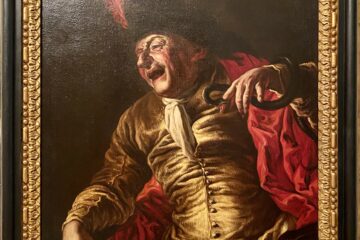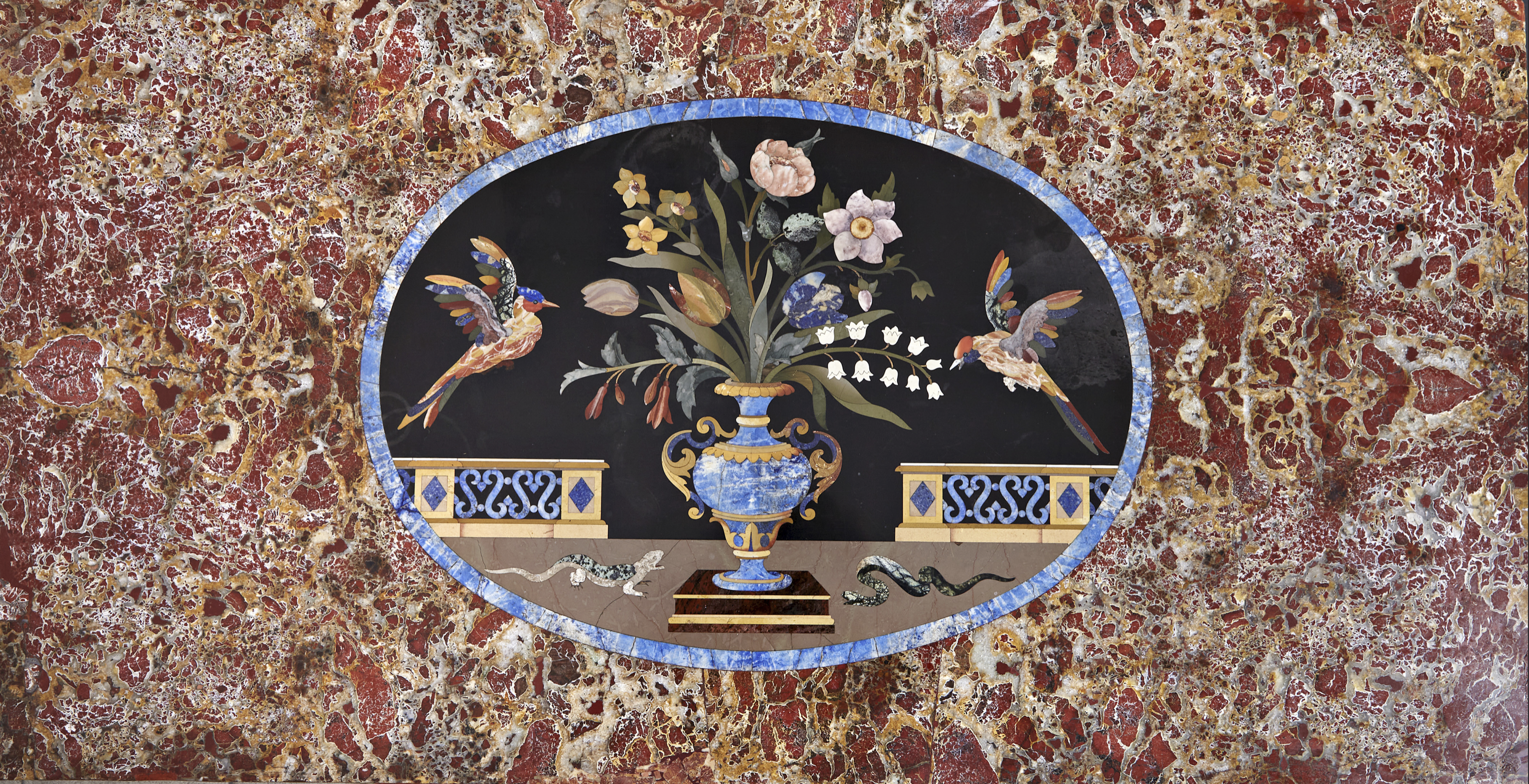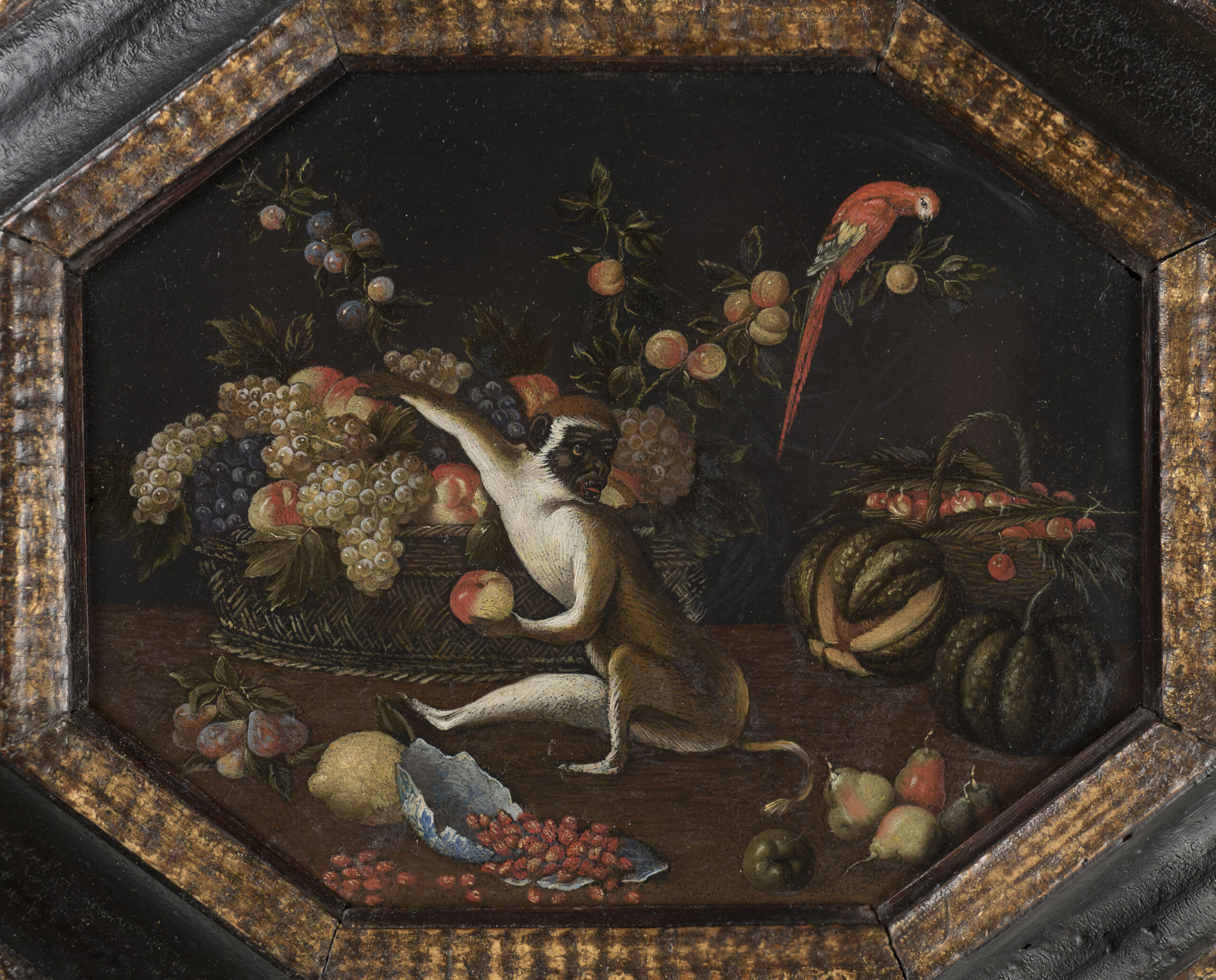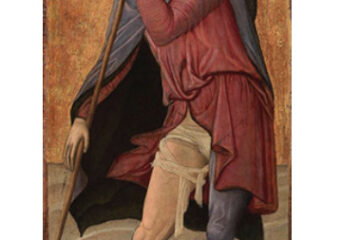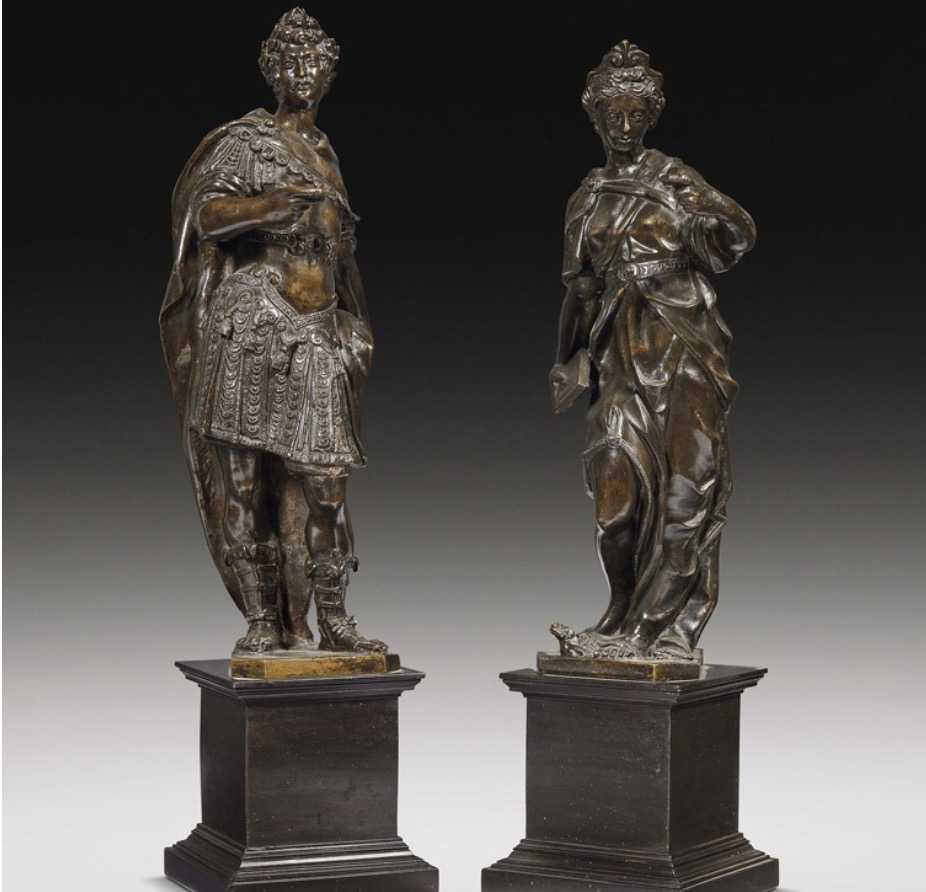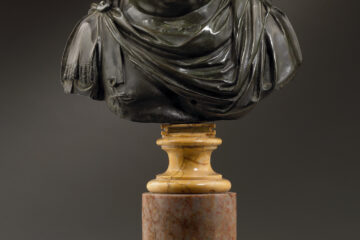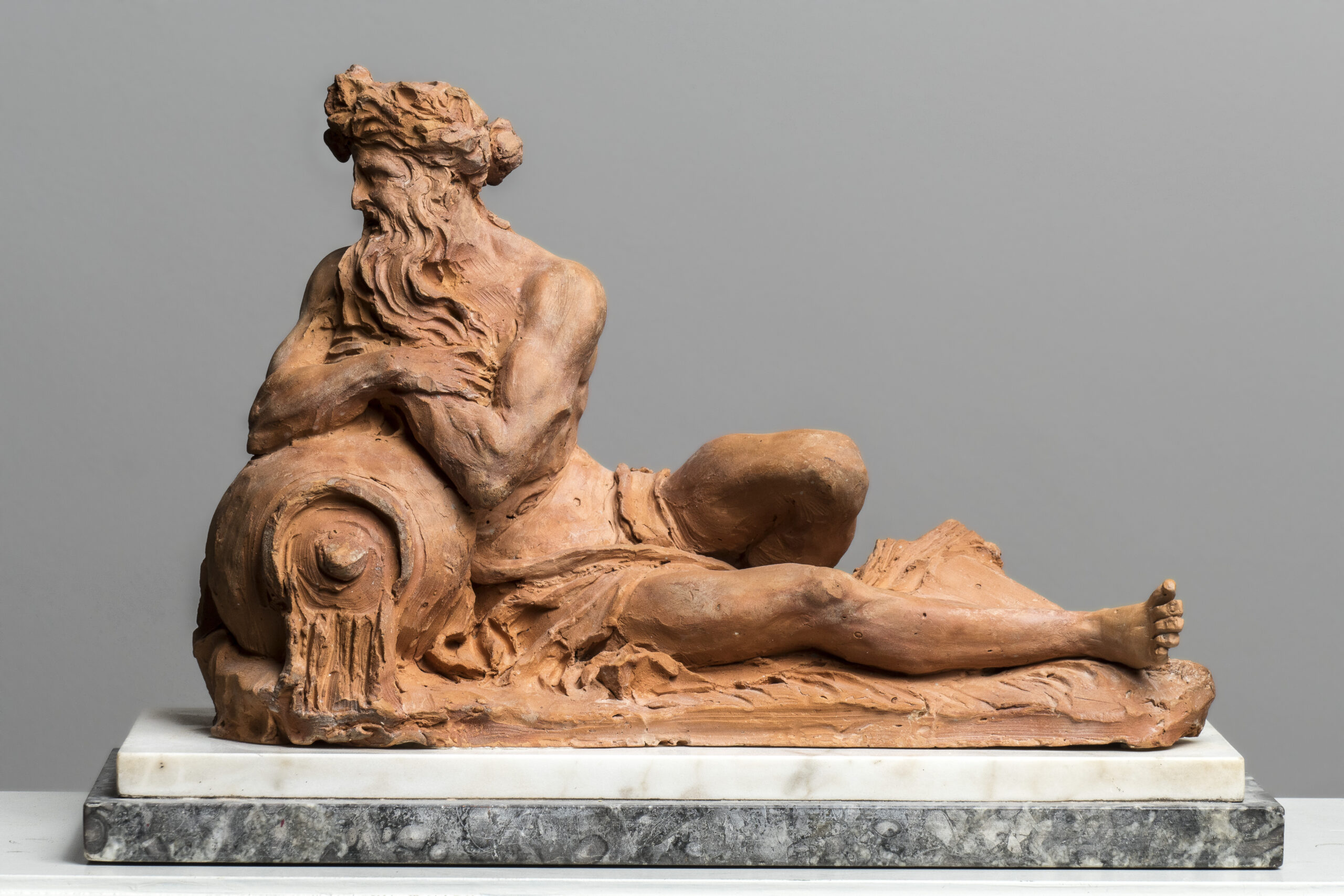This website uses cookies so that we can provide you with the best user experience possible. Cookie information is stored in your browser and performs functions such as recognising you when you return to our website and helping our team to understand which sections of the website you find most interesting and useful.
Works of art
SILVER ANTINOUS
Silver high-relief
depicting Antinous
mounted on African marble
Gioacchino Belli
Roma 1756-1822
Cm 30×30
Furniture
PIETRE DURE
Eclectic Top in African red breccia
centered by commissions in Pietre Dure and lapislazuli.
vase with flowers, lizard, snake and birds
Florence 19th century
Cm 101x42x52
Paintings
Jan van Kessel II
( Anversa 1645- Madrid 1708)attr
Oil on Blackboard H 24 – L 45
A monkey and a parrot make a rich still life from fruit and vegetables, with a Chinese porcelain bowl breaking too.
son of Jan van Kessel I, was a great-grandson of the famous Jan Brueghel. He moved from Antwerp to Madrid in 1678 to become a court painter.
Paintings
San Rocco by Tommaso Garelli
(Active in Bologna, 1450 – 1495)
Saint Roch
1455 ca. 108×51 cm
Tempera on panel with gold ground
Bibliography
Mauro Minardi
The panel under consideration, which is published here for the first time, has been identified by Giacomo Alberto Calogero and Mauro Minardi as the work of the Bolognese painter Tommaso Garelli. This is a remarkable acquisition for an author relatively new to studies, frequently mentioned in documents but substantially neglected by the Felsine art literature until the end of the 19th century. Only the interest of Carlo Volpe and Daniele Benati, as well as the insights of Luciano Bellosi and later Miklós Boskovits, allowed Garelli to emerge among the protagonists of the Bolognese artistic scene immediately after the mid-15th century.
On the figure of Garelli and his notable documentary mentions see F. Filippini, G. Zucchini, Miniatori e pittori a Bologna. Documents of the 15th century, Bologna 1968, pp. 158-165. See also S. Brevaglieri, Garelli, Tommaso, in Dizionario Biografico degli Italiani, 52, Rome 1999, pp. 283-285
Sculptures
FORTITUDE AND FAITH by Tiziano Aspetti
Tiziano Aspetti
(Padua, 1559 – Pisa, 1606)
FORTITUDE AND FAITH
Pair of bronze figures
50x17x12 cm
Comparison bibliography
L. Planiscig, The Giacinto Auriti Collection, Vienna 1931, no. 15;
J. Pope-Hennessy, Italian Bronze Statuettes I-II, in “Essays on Italian Sculpture,” London-New York 1968, pp. 172-198;
P. Cannata, in S. E. Zuraw – M. G. Barberini – P. Cannata – M. L. Casanova (eds.), Masterpieces of Renaissance and Baroque Sculpture from the Palazzo Venezia, Rome, exhibition catalog, Athens (Georgia) 1996, pp. 50-51, n. 6;
D. Banzato, Bronzes of the Renaissance: Vok Collection, Padua 2004, nn.26-27, pp. 78-79
Sculptures
Bronze of Vitellius
Francesco Righetti
(studio)
(Roma 1738-1819)
brown patinated bronze depicting
Emperor Vitellius ,
on a Giallo Antico marble base
shaped as a Porta Santa marble fluted column
H. (overall) 50 cm ; 19⅔ in.
From the series of Twelve Caesars produced by the Roman studio of Francesco Righetti (1749–1819), this bust is based on the antique model in the Museo Archeologico in Venice, known as Vitellius Grimani . Vitellius was briefly emperor in 69 CE, and the Lives of the Twelve Caesars by Suetonius (second century CE) contains an account of his life. In the sixteenth century, painters and sculptors began to generate many portrayals of the sovereign; among these was Gian Battista della Porta (c.1542–1597), who made a copy of Vitellius Grimani for the Palazzo Borghese in Rome.
The 1794 catalogue in French listing works offered by Francesco Righetti’s studio describes a series of Twelve Caesars costing’12 sequins each’. The present bust of Vitellius was one of these.
Sculptures
River God in terracotta
River God reclining on an urn
Terracotta slip on a later stand
in white and grey Sainte-Anne marble
In Greek mythology they were the sons of the river god Oceanus, the most ancient of Titans who
fought Jupiter for the supremacy of the world. Because they irrigated the land, rivers were worshipped
in local Greek cults as fertily gods. As rivers were sacred, particularly in dry lands, so were fountains
and springs, represented by nymphfs, the female counterparts of river gods.
First half of the 18th century
29,5 cm high, 43,2 cm wide, 20 cm deep
11 5⁄8 inch high, 17 inch wide, 7 7⁄8 inch deep
Sculptures
Pair of Neoclassical busts by Paolo Andrea Triscornia
Marble sculptures by
Paolo Andrea Triscornia
( Carrara 1757-1833)
Pair of neoclassical busts depicting,
Eugenio Beauharnis
(vice king of the kingdom of Italy)
Augusta of Bavaria
(queen of saxony)
H 70,5 – L 50 – P 31 cm.
Paolo Triscornia was appointed professor at the Carrara academy in 1803 and in the Napoleonic period he made a series of portraits for the imperial family ,
Including Paolina Borghese and Giuseppe Bonaparte.
Many of his works are now preserved in the Hermitage Museum.
